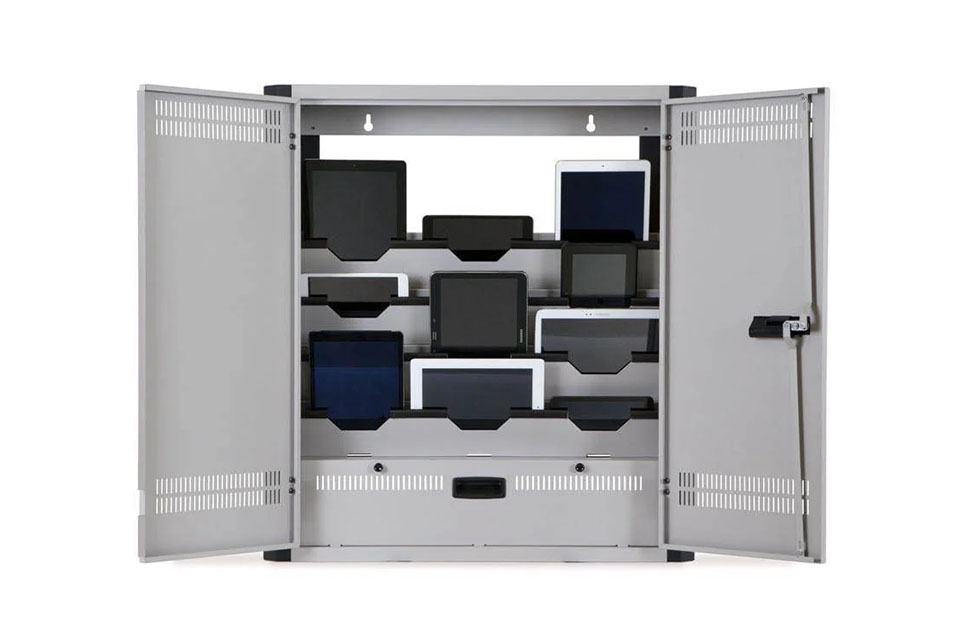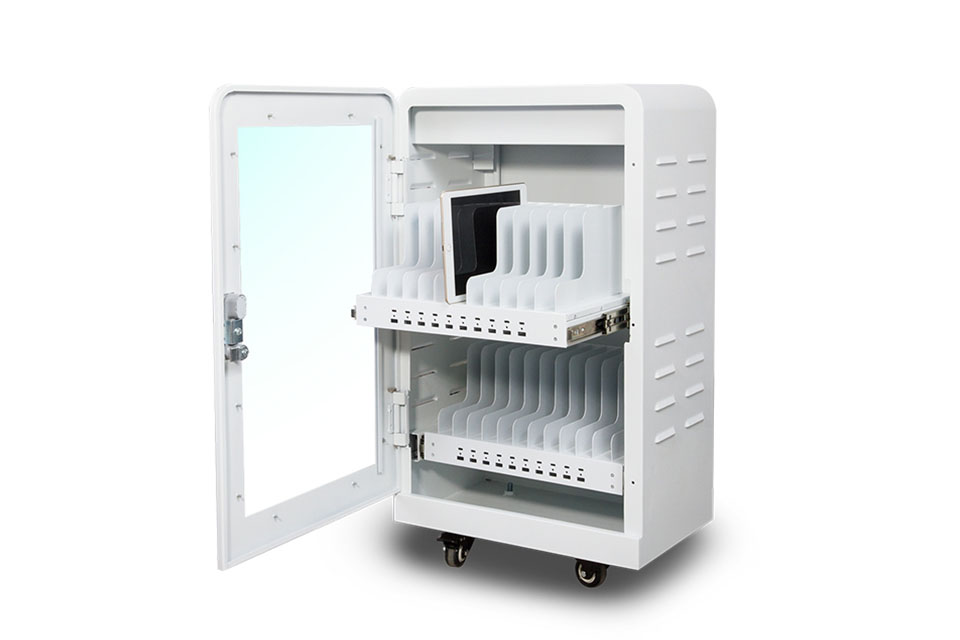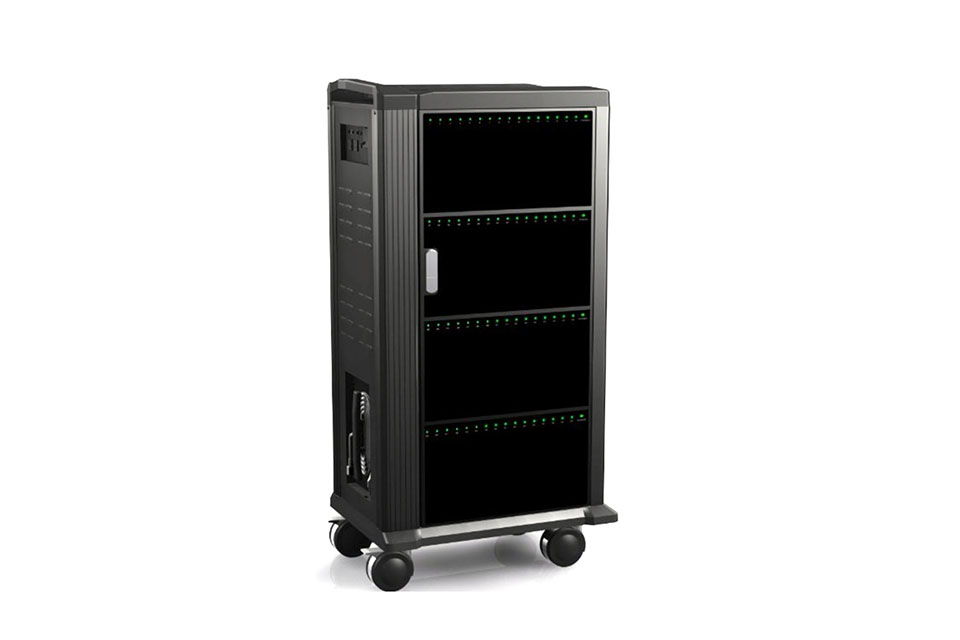The Role of Charging Cabinets in the Rise of Remote Learning and Hybrid Work
Summary
The Role of Charging Cabinets in the Rise of Remote Learning and Hybrid Work encompasses the critical function of charging solutions that have become increasingly vital in educational and corporate environments. As the prevalence of remote learning and hybrid work models surged—especially during the COVID-19 pandemic—charging cabinets emerged as essential tools for ensuring that digital devices remain operational and accessible, thus facilitating effective learning and collaboration across various settings. The significance of these cabinets lies not only in their ability to manage multiple devices efficiently but also in addressing the challenges posed by integrating technology into traditional educational frameworks and workplace environments.
Notably, the shift to hybrid learning, which blends in-person and online education, has necessitated robust technological support, including reliable charging solutions. The need for charging cabinets has been amplified by the increasing dependency on digital tools in both remote education and hybrid work arrangements. These cabinets enable educators and employees to manage their devices securely, reducing downtime caused by low battery levels, and ensuring seamless transitions between learning and working environments. As a result, they play a pivotal role in enhancing productivity and engagement while promoting a sustainable approach to technology usage within educational institutions and businesses alike.
The implementation of charging cabinets also highlights the broader context of technological infrastructure's role in educational reform and workplace innovation. These cabinets are designed to enhance device longevity and security, effectively addressing concerns about device theft and inefficient charging practices. However, the adoption of charging cabinets is not without challenges; institutions must navigate issues such as infrastructure upgrades and staff training to maximize their benefits.
In summary, the rise of charging cabinets reflects a significant trend towards integrating technology into the fabric of remote learning and hybrid work, underscoring their importance in facilitating a connected and efficient environment. As educational and corporate institutions continue to adapt to these evolving models, the role of charging solutions remains a focal point in discussions about future-proofing technology infrastructure and enhancing user experience.
Historical Context
The emergence of remote learning and hybrid work can be traced back to various technological advancements and societal shifts that have taken place over the past few decades. As education systems and workplaces adapted to the demands of a digital age, the integration of technology became crucial for facilitating effective learning and collaboration.
The Rise of Hybrid Learning
Hybrid learning, which combines traditional in-person classroom experiences with online education, gained significant traction during the COVID-19 pandemic. This approach allowed students to access lesson resources from virtually anywhere, offering flexibility that was essential during lockdowns. However, the foundational elements of hybrid learning were already in place prior to the pandemic, driven by the increasing use of educational technologies and the growing recognition of the need for personalized learning environments. The utilization of mobile learning applications and artificial intelligence has further enriched educational practices, enabling greater accessibility and engagement for students.
Challenges and Adaptations
As hybrid learning gained popularity, educators faced new challenges, including managing multiple learning environments and ensuring student engagement. Many teachers had to navigate various software platforms simultaneously to conduct classes effectively, which highlighted the need for improved technological support and training. This complexity necessitated comprehensive professional development for educators and a rethinking of classroom management strategies, particularly in the context of remote learning.
Importance of Technological Infrastructure
The importance of robust technological infrastructure, such as charging cabinets, became apparent as the reliance on digital devices increased. Reliable charging solutions are essential for maintaining a connected and efficient learning environment, allowing students to focus on their studies without the distraction of low-powered devices. As remote and hybrid learning models continue to evolve, the role of charging solutions has become integral to the successful implementation of these educational frameworks, reflecting a broader commitment to sustainability and innovation within educational institutions.

Functionality of Charging Cabinets
Charging cabinets serve as essential tools in educational and professional environments, particularly in the context of remote learning and hybrid work. Their primary functionality is to provide a secure, efficient, and organized way to charge multiple devices simultaneously.
Types of Charging Solutions
Charging cabinets come in various configurations, including wall-mounted, tabletop, and mobile solutions, capable of accommodating between 10 to 36 devices at a time. For instance, the Carrier 10 and 15 stations are designed for ease of use in classrooms, allowing for quick distribution of devices to students, which is crucial when time is limited. Additionally, larger units, such as the Putnam 8 or 16 with USB-C PD, cater specifically to "stay at school" programs that utilize tablets, featuring user-friendly designs that enhance operational efficiency.
Security Features
Security is a paramount concern in educational settings, necessitating robust measures to prevent theft and unauthorized access to valuable devices. Many charging cabinets are equipped with advanced locking mechanisms, such as key locks, digital keypads, and RFID systems, ensuring only authorized personnel can access the equipment. This is particularly vital in schools, where high rates of theft underscore the need for effective security solutions.
Smart and Connected Systems
Recent advancements have introduced smart locker systems that offer not only physical security but also internet connectivity for remote monitoring and control. This feature allows administrators to track device status in real time, significantly enhancing management capabilities across multiple campuses or buildings. Such functionalities are especially beneficial in environments with sizable device fleets, where traditional management methods may be cumbersome.
User Experience and Customer Support
The user experience is further enhanced by the convenience of prewired charging stations, which minimize setup time for IT staff, allowing them to focus on larger projects. Positive customer support experiences also contribute to overall user satisfaction, as brands that provide responsive assistance tend to receive higher ratings from their users.

Benefits of Charging Cabinets
Charging cabinets, also known as charging stations or carts, offer a range of benefits, particularly in educational settings where the management of multiple electronic devices is crucial. These secure storage units are designed to charge various devices simultaneously, including tablets, laptops, and smartphones, while providing features that enhance their usability and longevity.
Efficient Device Management
One of the primary advantages of charging cabinets is their capacity for efficient device management. These units provide centralized storage and charging solutions that help eliminate the chaos associated with scattered devices across different workstations. By ensuring that all devices are stored securely and charged in one location, educational institutions can streamline operations and save valuable time.
Enhanced Security
Charging cabinets are equipped with locking mechanisms that secure devices from theft and unauthorized access. This added layer of security is particularly important in environments where expensive technology is used regularly, ensuring that devices remain safe when not in use.
Improved Device Longevity
Using charging cabinets can significantly enhance the longevity of electronic devices. Many charging cabinets are designed with smart charging technology that optimizes the charging process, reducing the risk of overcharging or overheating. This can lead to longer battery life and reduced wear and tear on devices, ultimately saving costs related to replacements and repairs over time.
Space Optimization
The design of charging cabinets allows for efficient use of space, making them suitable for various environments. Whether in classrooms or offices, these cabinets can be tailored to fit the specific needs of the institution, often featuring a compact footprint that allows for installation in tight spaces. This space optimization is essential in settings where every square foot is valuable.
Time-Saving
With charging cabinets, educators and students no longer need to spend time searching for available outlets or managing tangled cords. These cabinets allow multiple devices to charge simultaneously, freeing up time for educators to focus on instruction rather than logistics. This efficiency can enhance overall productivity in the classroom.
Promotes Digital Learning
Finally, the use of charging cabinets promotes a more effective digital learning environment. By ensuring that devices are always ready for use, these cabinets support the integration of technology into teaching and learning processes. This accessibility encourages students to engage more fully with digital resources, enhancing their overall educational experience.

Implementation in Educational Institutions
The implementation of charging cabinets in educational institutions has become increasingly relevant due to the rise of remote learning and hybrid work models. These cabinets serve as essential infrastructure that supports the integration of technology in classrooms and learning environments, allowing students and educators to efficiently charge and manage their devices.
Enhancing Accessibility and Convenience
Charging cabinets provide a centralized location for students to charge their electronic devices, such as laptops and tablets, ensuring that they remain powered throughout the school day. This is particularly crucial in remote learning environments, where students rely heavily on technology for accessing course materials and participating in virtual classes. By improving accessibility to charging solutions, educational institutions can enhance students' ability to engage in digital learning experiences without interruptions.
Supporting Hybrid Learning Models
As many educational institutions adopt hybrid learning models that combine in-person and online instruction, charging cabinets play a vital role in facilitating seamless transitions between learning formats. These cabinets allow schools to maintain a steady supply of charged devices, ensuring that students can effectively switch between home and school environments without the logistical challenges of managing device battery life. Furthermore, charging cabinets can also support collaborative projects where multiple devices need to be charged simultaneously, fostering teamwork and group learning activities.
Addressing Environmental Considerations
When implementing charging cabinets, institutions must also consider environmental conditions that could affect the installation and functionality of these systems. Factors such as humidity, dust exposure, and temperature variations can influence the performance of charging units. It is essential to choose charging cabinets with appropriate ratings, such as NEMA or IP ratings, to ensure durability and reliability in various educational settings. This strategic selection contributes to a sustainable and effective implementation of technology in education.
Challenges and Considerations
Despite the benefits, the successful implementation of charging cabinets is not without challenges. Institutions may encounter issues related to infrastructure upgrades, maintenance, and the need for staff training on device management. Addressing these challenges is crucial for maximizing the utility of charging cabinets and ensuring that they contribute positively to the educational experience.
Implementation in Corporate Settings
The adoption of hybrid work models in corporate settings has transformed how organizations operate and manage their workforce. As businesses navigate this shift, the integration of technology, including charging cabinets and other resources, plays a crucial role in facilitating seamless transitions between remote and in-office work environments.
Technology Integration and Support
Effective implementation of hybrid work requires a robust technological framework that ensures consistent connectivity and support for both remote and in-office employees. Organizations are increasingly investing in enterprise-grade tools that enable smooth communication and collaboration, such as advanced video conferencing systems and digital whiteboarding platforms. Additionally, charging cabinets are being utilized to manage and charge devices efficiently, ensuring that employees have access to the necessary technology regardless of their work location.
Addressing Challenges of Hybrid Work
While the hybrid work model presents numerous advantages, it also poses specific challenges, particularly in technology management. Companies often face hurdles related to inconsistent technology experiences, security concerns, and ensuring equitable participation in meetings.
Investing in Reliable Technology: Companies are prioritizing high-quality video conferencing tools that are specifically designed for hybrid meetings, which helps in overcoming connectivity issues and enhances collaboration across dispersed teams.
Training and Support: Providing comprehensive training for employees on new technologies is essential. Organizations should develop user-friendly training materials and resources to facilitate a smooth transition to hybrid work environments. This approach helps mitigate resistance to change and encourages adoption.
Customizing Hybrid Work Policies
As organizations embrace hybrid work, there is a shift away from one-size-fits-all approaches towards customized hybrid work policies that cater to specific business functions and teams. This tailored strategy allows companies to adapt their hybrid models based on the unique needs of different roles, fostering an environment that supports employee well-being and productivity. By implementing structured arrangements—such as the three-day office, two-day remote model used by Trip.com—companies can enhance employee satisfaction and reduce turnover rates.
Future Trendss.
Innovations in Charging Solutions
The advancement of smart charging technologies will play a pivotal role in accommodating both remote learning and hybrid work models. Charging systems that adhere to standards like ISO 15118 will enhance user experience by providing efficient and intelligent charging options for electric vehicles. Additionally, innovative products like multi-port USB-C chargers will facilitate the charging of multiple devices simultaneously, promoting energy efficiency and cost savings in educational and workplace environments.
Support and Maintenance Strategies
Long-term sustainability of charging solutions will depend on ongoing support and maintenance. Effective management strategies that encompass regular maintenance, software updates, and technical support are essential to ensure charging systems meet the evolving needs of users. As institutions and businesses adopt these solutions, partnerships with electrification leaders, licensed electricians, and local organizations will be crucial for successful implementation.
Environmental Commitments and Future-Proofing
The integration of charging infrastructure in workplaces not only supports the growth of electric vehicle adoption but also demonstrates an organization's commitment to sustainability. Future facilities will need to be designed with flexible charging solutions that can adapt to various work environments, ensuring they remain relevant and efficient as technology evolves. As educational institutions and businesses embrace technology-driven curricula and operations, charging solutions will be integral in fostering an environment conducive to both learning and productivity.
 Mobile Charging Cabinets: Power on the Go for Exhibitions and Concerts
Mobile Charging Cabinets: Power on the Go for Exhibitions and Concerts
 How Charging Cabinets Improve Attendee Experience at Conferences
How Charging Cabinets Improve Attendee Experience at Conferences
 Declutter Your Office: The Role of Charging Cabinets in Modern Workspaces
Declutter Your Office: The Role of Charging Cabinets in Modern Workspaces

